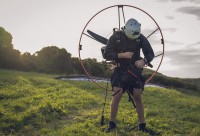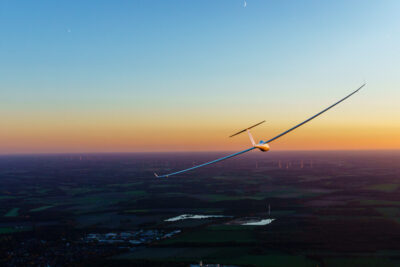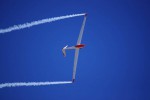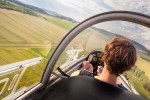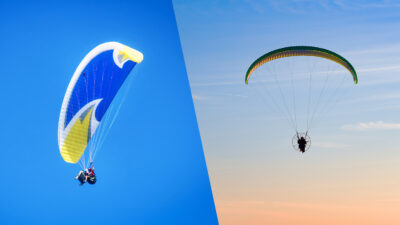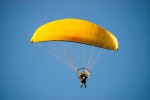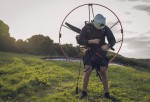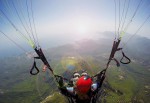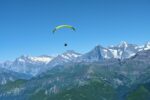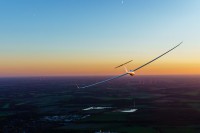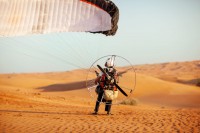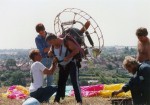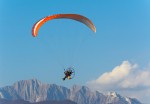Paragliding vs. Paramotor: Understanding the Key Differences
18 September 2023 | Updated on January 03, 2024
Have you ever found yourself staring up at the sky, watching those daring souls soaring effortlessly and wondered about the intricacies of their flight? While both paragliding and paramotoring offer the thrilling experience of flying, they are two distinct air sports with their own set of equipment, techniques, and appeal. In this article, we will delve into the primary differences between paragliding and paramotor, to help you discern which might be the right aerial adventure for you.
Whether you’re a novice pilot, an aviation enthusiast, or just curious about these skyward pursuits, understanding the distinctions can deepen your appreciation for both. As you hover on the brink of choosing a new adventure, let’s explore what sets paragliding and paramotoring apart.
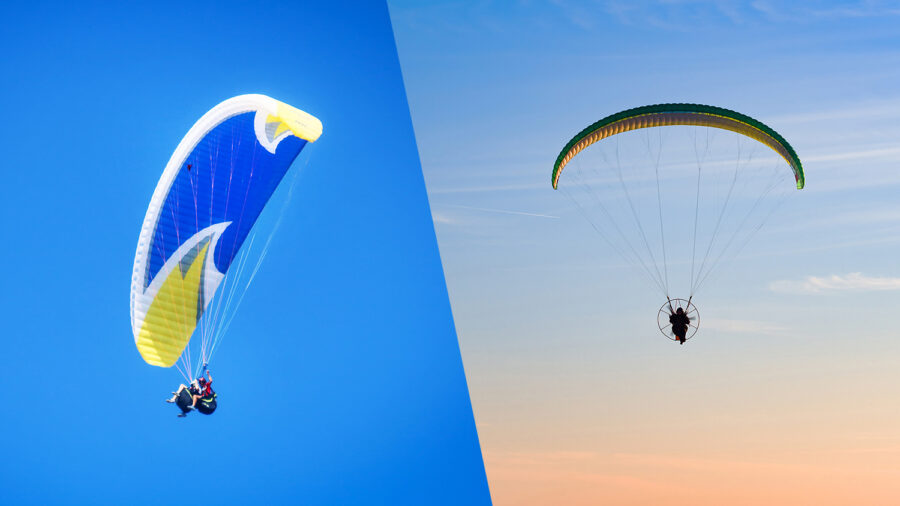
A Brief Overview of Each Sport
The sky offers various ways to experience the thrill of flight. Let’s begin by understanding the foundational principles behind paragliding and paramotoring.
Paragliding
Paragliding is a recreational and competitive adventure sport that involves soaring through the air using a lightweight, non-motorized, foot-launched glider aircraft. The pilot sits in a harness attached to a fabric wing, which is made up of a large number of interconnected cells. By manipulating cords, or “brake lines”, the pilot can steer and control their direction. One of the purest forms of flight, paragliding is highly dependent on weather conditions. Pilots often search for thermal updrafts to gain altitude, allowing them to stay aloft and even travel long distances. The freedom of paragliding comes from its simplicity, the ability to pack up the equipment into a backpack, and the intimate connection between the pilot and the natural elements.

Paramotor
Also known as powered paragliding, paramotoring takes the basic concept of paragliding and adds an engine. A paramotor consists of a small motor driving a propeller, worn like a backpack under the paraglider wing. This motor provides thrust, allowing the pilot to take off from flat ground, maintain altitude, and fly even when there are no thermals or when wind conditions are less than optimal. The addition of the motor adds weight to the setup, but it also gives a degree of freedom and control that’s different from traditional paragliding. Paramotoring is popular among those who want more predictable flight durations and destinations, as they are not wholly reliant on weather conditions to stay airborne.
Together, paragliding and paramotoring represent two sides of the free-flight coin. While they share similarities in the sense of the freedom they offer and the basic equipment used, their operation, experience, and appeal can differ significantly based on the presence or absence of the motor. As we delve deeper into their nuances, you’ll discover which of these aerial adventures resonates with your spirit of adventure.
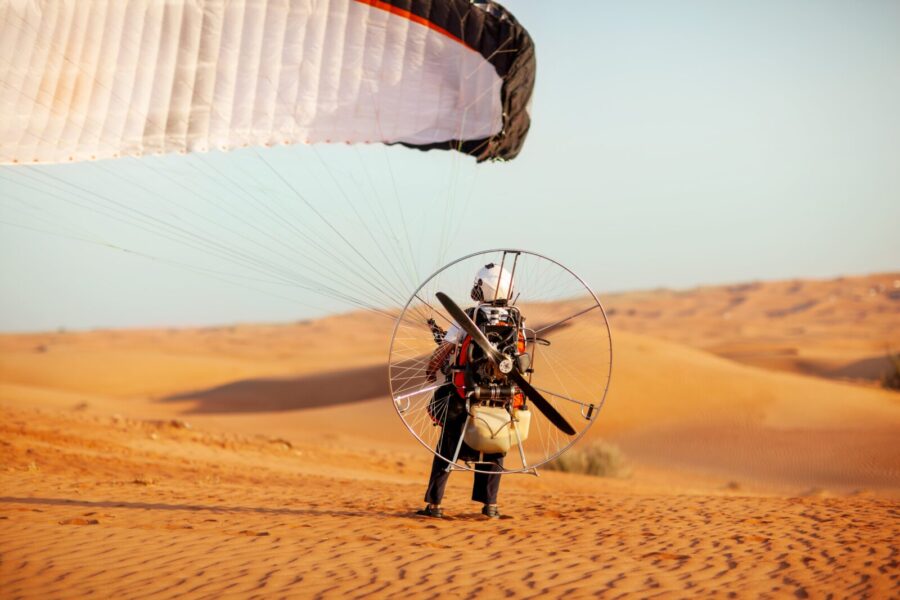
Equipment Differences
The equipment used significantly influences the flight experience. Here’s a breakdown of what sets paragliding and paramotoring equipment apart.
Paraglider Design and Components
At its core, a paraglider is a simple yet ingeniously designed piece of equipment. The wing, commonly referred to as a “canopy,” is made from high-quality, lightweight nylon or polyester fabric. It’s divided into a series of cells that fill with air, providing lift. The pilot’s harness is connected to the wing via lines grouped into main risers. These lines allow for steering and control when the pilot pulls on the brake handles. The design of the canopy, the length, and strength of the lines, as well as the harness’s style, can vary depending on the paraglider’s purpose, whether for beginner pilots, cross-country flights, or acrobatic maneuvers.
Paramotor Design: The addition of a motor and propeller
A paramotor takes the essential components of a paraglider and adds power. This power comes in the form of a two or four-stroke engine, which typically runs on a mixture of gasoline and oil. The engine drives a propeller, and together they are housed in a protective cage that the pilot wears like a backpack. Throttle control is in the pilot’s hand, allowing for easy adjustments in thrust during flight. This motorized setup, while adding weight, provides the significant advantage of self-launching without needing the wind or hill that’s crucial for traditional paragliding takeoffs.
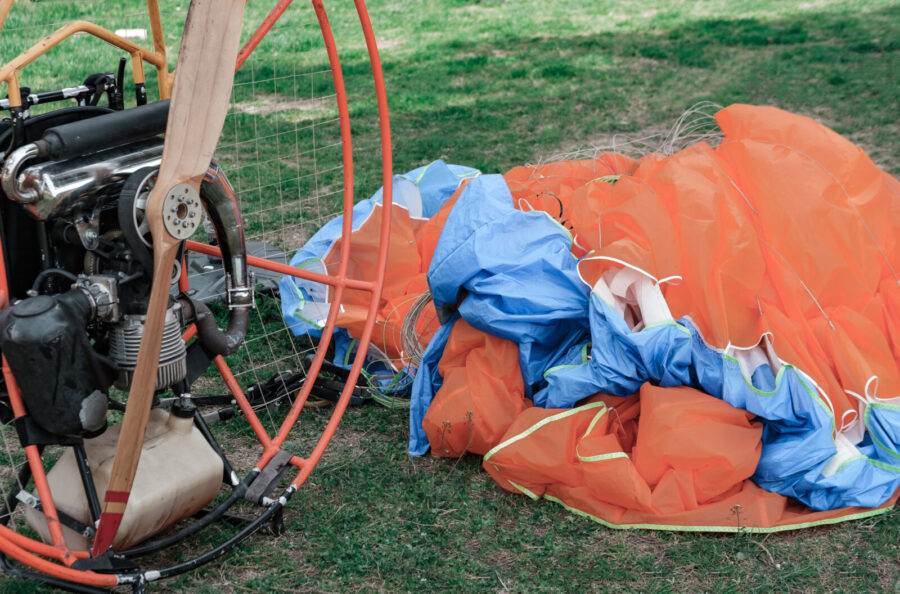
Safety Gear for Both
While the primary equipment differs, both paragliding and paramotoring share essential safety gear. Helmets are a must, designed to protect against impact and sometimes equipped with communication devices. Variometers, which indicate your rate of climb or descent, can be essential for paragliders searching for thermals. Additionally, many pilots, whether paragliding or paramotoring, opt to carry a reserve parachute. This secondary parachute can be deployed in the rare case of a main wing collapse or malfunction. For paramotoring, ear protection is also advisable, given the proximity to the engine’s noise.
Both sports emphasize the importance of regular equipment checks and timely replacements. Wear and tear, particularly in the lines and wing fabric, can compromise safety and performance. As with any aviation-related activity, ensuring your gear is in top shape is a cornerstone of safe flight.
Learning Curve and Training
Entering the world of aerial sports requires proper training. While both paragliding and paramotoring promise the sky, the path to getting airborne varies between them.
Initial Training for Paragliding: Requirements and Duration
Embarking on a paragliding journey typically begins with an introductory course, often lasting a day or two. Here, novices learn about the equipment, basic aerodynamics, and the safety protocols associated with launching and landing. Once the foundation is set, students progress to a full beginner’s course, spanning a week or more. This phase involves ground handling (learning to control the wing on the ground), low altitude flights, and eventually higher flights under the close supervision of certified instructors. Achieving a solo flight status, where one can fly without instructor supervision, generally requires a minimum of 25 to 30 successful flights and passing theoretical and practical exams. Continued education and practice are encouraged, with advanced courses available for those aiming to master cross-country flying or aerobatics.
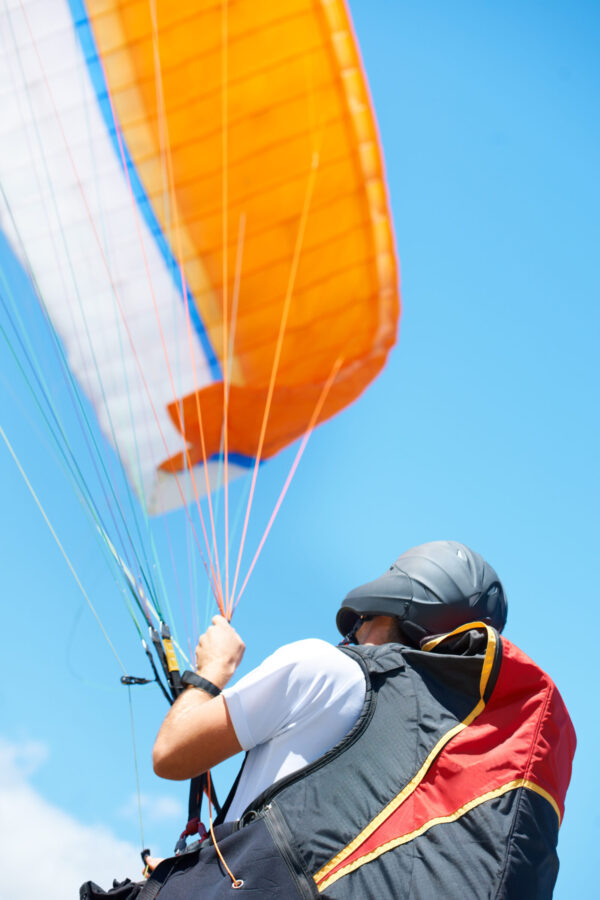
Initial Training for Paramotoring: Requirements and Duration
The training pathway for paramotoring shares similarities with paragliding but introduces the complexities of motor management. After familiarizing oneself with the equipment, students learn motor starting procedures, throttle control, and emergency shutdowns—all on the ground before attempting any flight. Ground handling is similarly crucial, but with the added challenge of managing the motor’s thrust.
Beginner pilots will practice “taxiing” (moving on the ground under power without taking off) to gain confidence. Transitioning to flight requires a combination of wing control and throttle management for smooth takeoffs and landings. On average, aspiring paramotor pilots can expect to spend anywhere from 7 to 14 days in training, with a minimum of 20 to 30 flights before they are considered ready for unsupervised flights.
Comparing Ease of Entry for Beginners
While both sports demand dedication and a commitment to safety, paragliding is often perceived as having a gentler learning curve, largely because it omits the complexities of engine management. However, the need for specific launch conditions, such as hills or strong winds, can be limiting. Paramotoring, on the other hand, offers more flexibility in launch locations but requires a better grasp of multitasking, balancing wing control with engine operations. Regardless of the chosen path, training under a certified school or instructor is imperative. Their guidance ensures not just skill acquisition but instills a deep respect for safety protocols and risk management in the unpredictable realm of aerial sports.
Flight Characteristics and Techniques
Understanding the nuances of flight and maneuverability is crucial when comparing paragliding and paramotoring. As we dive deeper, let’s uncover the distinct techniques and characteristics that shape the experience in the air for each sport.
Launch Techniques in Paragliding vs. Paramotor
Launching is the first and perhaps most exhilarating step to airborne freedom. In paragliding, the pilot requires an elevated point, such as a hill or mountain, to initiate a forward or reverse launch. This depends on the wind direction: a forward launch is executed with the pilot facing downhill, running into the wind until the wing lifts them off the ground. In contrast, a reverse launch involves the pilot facing the wing and the wind, pulling it into the air, turning around, and then running to take off. On the other hand, paramotoring offers the advantage of a flat ground launch. Thanks to the motor’s thrust, the pilot can generate the required lift without a natural elevation, making it possible to take off from fields, beaches, or any open area.
Beyond the traditional backpack-style paramotor, there’s the option of paramotor trikes. These are small three-wheeled carts to which the motor and propeller are mounted. Trikes are especially beneficial for those who might find the weight of a backpack motor challenging or for pilots wanting to carry additional gear. With a trike, the pilot can sit comfortably, throttle up, and allow the wing to rise before rolling smoothly into the air. This option offers an accessible entry point for many into the world of powered paragliding, bridging the convenience of wheeled takeoffs with the freedom of flight.
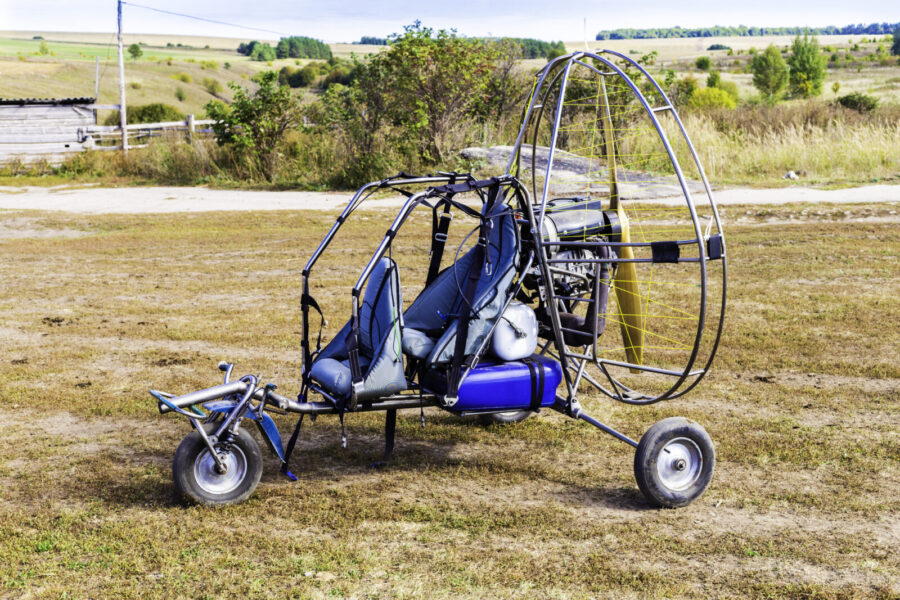
Flight Control and Maneuvering
Once airborne, the control dynamics come into play. For paragliders, turns are made by pulling on one of the brake handles, causing that side of the wing to slow down and initiate a turn. Weight shift, where the pilot leans to one side in the harness, can also help in refining turns and maneuvers. Thermals (rising columns of warm air) are sought for gaining altitude and extending flight durations, just like in gliding. Paramotors, however, have the added element of throttle control. While the wing steering remains similar, the motor’s power can be adjusted to climb, maintain altitude, or descend. This additional control means paramotor pilots can explore the skies even when thermals are not present.
Landing Considerations
All good flights must end with a safe landing. In paragliding, pilots seek out a suitable landing zone, ideally an open field free from obstacles. The approach is planned to face into the wind, slowing the glider down for a controlled and gentle touch down. Paramotoring landings follow a similar protocol, but with the advantage of throttle control, pilots can manage their descent rate and even perform “go-arounds” if the initial approach isn’t optimal. In both cases, a thorough understanding of wind direction and speed is crucial to ensure a smooth and safe landing.
Pros and Cons of Paragliding and Paramotoring
When choosing between paragliding and paramotoring, it’s essential to weigh the benefits and potential drawbacks of each. By understanding the unique advantages and challenges, you can make a more informed decision about which aerial sport aligns with your aspirations and comfort levels.
Paragliding Advantages
- Purity of Flight: Paragliding offers an unpowered flight experience, closely connecting pilots with the elements. Harnessing wind and thermals to soar can be profoundly rewarding.
- Portability: Without the weight of a motor, paragliding equipment is relatively lightweight, easily fitting into a backpack. This portability facilitates hiking to launch spots or traveling with gear.
- Lower Maintenance: Absence of an engine means less maintenance, fewer mechanical checks, and reduced ongoing costs compared to paramotoring.
- Quieter Experience: The silence during flight allows pilots to immerse themselves in the environment, only accompanied by the sound of the wind.
Paragliding Disadvantages
- Dependent on Conditions: Successful flights are highly dependent on favorable weather, wind, and thermal conditions. This can limit the number of flying days.
- Physically Demanding Launch: Running to launch, especially on uneven terrains, can be physically demanding and might not be suitable for everyone.
- Shorter Flight Duration: Without an engine, flight durations can be limited, especially if thermals are not available.
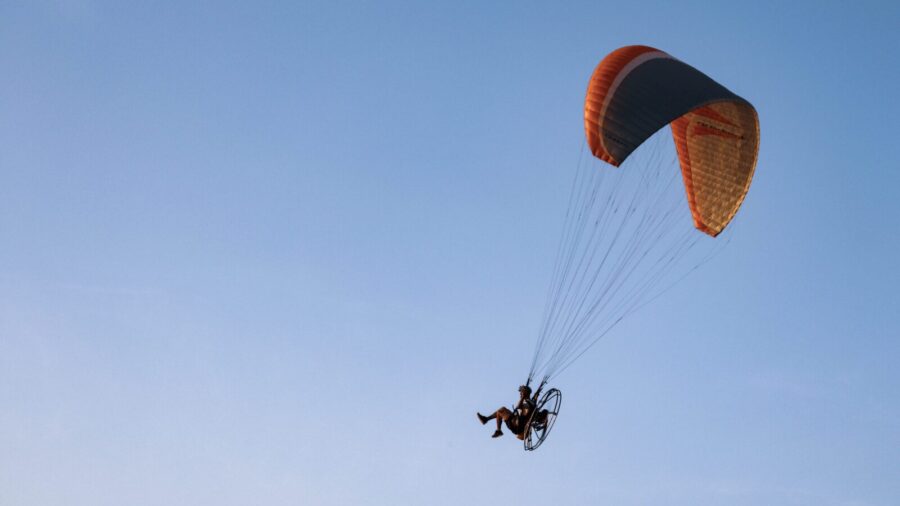
Paramotoring Advantages
- Flexible Launch Sites: Thanks to the motor, pilots can take off from flat grounds, eliminating the need for hills or mountains.
- Extended Flight Duration: The engine allows pilots to remain airborne even without thermals, resulting in potentially longer flight durations.
- Predictable Flight Paths: With power on demand, pilots can chart more predictable routes and destinations.
- Trike Option: As previously mentioned, the availability of trikes offers an accessible entry for those who prefer wheeled takeoffs or want to carry more gear.
Paramotoring Disadvantages
- Heavier Equipment: Even without considering fuel, the motorized setup is heavier, making it more cumbersome to transport.
- Maintenance Needs: Engines require regular maintenance checks, oil changes, and potential repairs, increasing the ongoing costs and upkeep time.
- Noise: The engine’s noise can be a deterrent for some, as it alters the serene experience of flight.
- Cost: Initial investment in paramotoring equipment, especially quality engines and trikes, can be higher compared to paragliding.
In conclusion, both paragliding and paramotoring offer unique experiences, with each having its distinct charm and challenges. Your choice should align with your personal preferences, budget considerations, physical capabilities, and the kind of flying experience you desire. Whether soaring silently with the thermals or cruising with the hum of a motor, the sky offers a world of possibilities waiting to be explored.
